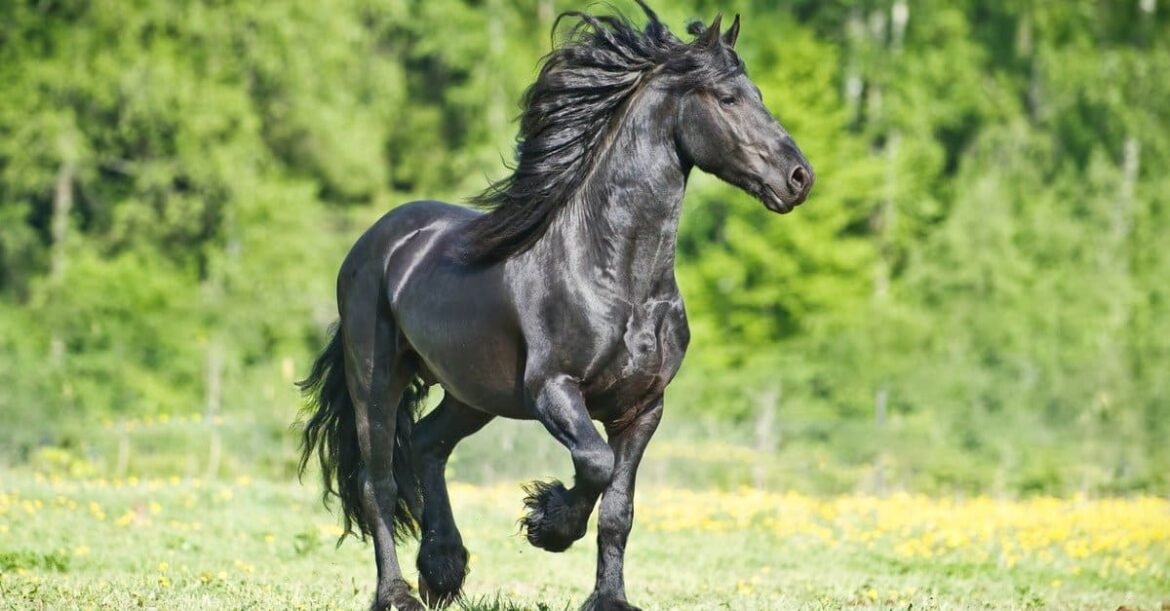Imagine standing beside a powerful creature, its breath visible in the morning chill, mane gently swaying. That is the horse. Across centuries, humans and horses have forged bonds of utility, sport, and companionship. Whether galloping across a field or patiently waiting in a stable, the horse captures our imaginations.
1.Introduction & Hook
In this guide, we dive deep into horse: its biology, behavior, breeds, care, history, and role in human life. Whether you’re new to equines or seeking richer understanding, you’ll gain insight that’s fresh, practical, and compelling.
2. What Is a Horse? (Definition & Biology)
A horse (scientific name Equus ferus caballus) is a hoofed, herbivorous mammal belonging to the family Equidae. It is one of two surviving subspecies of Equus ferus.
Key biological features:
- It has a single toe (hoof) on each foot.
- Horses exclusively breathe through their nostrils, which means they are unable to inhale through their mouths.
- The digestive tract is one-directional; horses do not vomit or burp like many other mammals.
- They have excellent senses: vision nearly 360°, acute hearing, and a strong sense of smell.
3. A Brief History & Evolution
The lineage of horses dates back some 45 to 55 million years. Their ancestor, a small multi-toed creature called Eohippus, gradually evolved into the single-hoofed animals we know today.
Humans started to tame horses in Central Asia approximately in 4000 BCE.. By 3000 BCE, domestication was more widespread.
Some interesting evolutionary and historical points:
- Eohippus had multiple toes and was quite small compared to modern horses.
- The horse’s transformation involved limb lengthening, hoof development, and dental adaptation to grazing.
- Over time, humans bred horses for size, strength, speed, and temperament.
- Domesticated horses spread globally, becoming essential to transport, warfare, agriculture, and trade.
4. Horse Breeds & Types
Not all horses look or act alike. Over time, many breeds have emerged, each suited for specific tasks or environments.
Common Types of Horses
| Type / Use | Characteristics | Examples |
| Draft / Work | Large, strong, heavy bone | Clydesdale, Shire |
| Light / Riding | Agile, comfortable gaits | Arabian, Thoroughbred, Quarter Horse |
| Pony / Miniature | Small size (under ~14.2 hands) | Shetland, Welsh, Miniature Horse |
| Feral / Wild | Less human intervention | Przewalski’s Horse (wild species) |
Przewalski’s horse is a rare wild equine with 33 chromosome pairs, different from domestic horses.- The Mongolian horse is hardy, able to survive in tough conditions, and historically supported Mongol armies.
- Thumbelina was the smallest horse on record only 43 cm tall.
- The world’s heaviest horse, Sampson, was a gigantic Shire horse, weighing 3,360 lbs.
5. Horse Anatomy & Unique Traits
The horse’s body is a marvel of evolution, specialized for speed, endurance, and survival.
Key Features & Adaptations
- Hooves & Legs
Each horse foot ends in a single hoof. The limbs are long and built for efficient stride. - Stay Apparatus
This system of tendons and ligaments lets a horse lock its legs so it can rest standing up. - Eyes & Vision
Eyes placed on each side of the head provide near 360° vision. They do have two blind spots: one directly in front and one directly behind. - Teeth & Age Estimation
By examining the shape and wear of teeth, one can estimate a horse’s age, though not precisely. - Respiratory & Cardiovascular
Horses have large lungs and hearts. During intense exertion, their heart rate can rise dramatically to supply oxygen. - Digestive System
A small stomach, long intestines, and continuous grazing behavior characterize equine digestion.
Fun Facts
- Horses sleep standing up often, though a short period of lying down is necessary for full deep sleep.
- They can’t burp or vomit their digestive tract is a one-way system.
- Their ears have 10 muscles, allowing independent rotation nearly 180°.
- A horse can go from still to a powerful kick in just 0.3 seconds.
6. Behavior, Communication & Intelligence
Horses are social creatures. They communicate via body language, vocal signals, and even facial expression.
Social Structure & Herd Behavior
- In the wild or semi-wild, horses form herds where one or more mares often lead, and stallions act as protectors.
- Hierarchies may be fluid; dominance depends on behavior rather than fixed rank.
Communication Modes
- Body language: ears pinned back, tail swishing, head position.
- Vocalizations: neighing, whinnying, snorts, nickers.
- Facial expressions: the “flehmen response” (curling upper lip) helps detect scents.
Intelligence & Memory
Horses are remarkably smart. They can remember:
- People, faces, and locations for years.
- Training patterns and tasks through positive reinforcement.
- Emotional cues: they mirror human heartbeats or arousal. A rider’s fear can influence their horse.
Example: A horse may refuse a jump if it senses hesitation in the rider’s suggestion.
7. Horse Care & Management
Owning or caring for a horse is a commitment. It demands time, resources, and knowledge.
Nutrition & Feeding
- Horses are grazers. They should eat small amounts frequently rather than one large meal.
- Forage (grass or hay) should make up the bulk of their diet.
- Supplements may be added but require veterinary guidance.
- Watch out for colic a dangerous digestive disorder common in horses.
Housing & Shelter
- Stables & shelters should be dry, ventilated, and safe.
- Bedding (straw, shavings) helps comfort and reduces injury.
- Horses benefit from daily turnout letting them be outdoors in pasture.
Health & Veterinary Care
- Vaccinations, dental checks, deworming must be scheduled regularly.
- Hoof care is critical trimming or shoeing every 6–8 weeks.
- Monitor body condition: underweight or overweight horses face health risks.
- Be aware of welfare concerns such as bit-induced pain. Improper bit use can injure a horse’s mouth.
Safety & Handling
- Approach from the front or side so the horse sees you.
- Use proper gear (halters, lead ropes) to control safely.
- Recognize warning signs: pinned ears, showing whites of eyes, agitation.
- Always wear protective gear when handling or mounting.
- Riding, Training & Sport
People ride and train horses for recreation, sport, work, and therapy.
Basic Training Phases
- Groundwork leading, voice commands, desensitization.
- Saddle & Bridle Introduction fitting equipment and accepting it.
- Riding Basics walk, trot, canter, transitions.
- Advanced Training jumping, dressage, western riding, endurance.
Proper training relies on consistent signals, patience, and positive reinforcement.
Popular Equestrian Sports & Uses
- Dressage elegant movement, precision, obedience.
- Show jumping clearing obstacles within time.
- Endurance riding covering long distances.
- Western events barrel racing, reining, cutting.
- Therapeutic riding / Equine-assisted therapy horses help human emotional or physical healing.
Case in point: A program in which children with autism ride horses showed improvement in balance, confidence, and social interaction.
Famous Horses & Stories
- Secretariat legendary Triple Crown winner known for an incredibly large heart.
- Old Billy lived to 62 years the longest living horse on record.
- Thumbelina smallest horse ever recorded.
9. Horse in Culture, Economy & Therapy
Cultural & Historical Significance
- Horses have shaped human history: in warfare, transport, agriculture.
- In many cultures, horses symbolize power, freedom, nobility.
- In Mongolia, horses are central to nomadic identity: milk, meat, travel, folklore.
Economic Impact
- Equine industries include racing, breeding, tourism, therapy, and equestrian centers.
- Equine related jobs: trainers, vets, stable hands, farriers.
- The sport and leisure market is vast saddle makers, tack, feed, transportation.
Therapeutic Value
- Equine-assisted therapy supports mental health, physical rehabilitation, and social skills.
- People with disabilities or emotional trauma often benefit from interacting with horses.
10. Challenges & Welfare Issues
While horses bring joy and utility, they also face challenges.
Common Threats & Welfare Concerns
- Poor housing or nutrition leads to disease and suffering.
- Overwork, especially in racing, can cause injuries, lameness, breakdowns.
- Bit-related mouth injuries are underappreciated; discomfort may impair performance.
- Neglect, abuse, abandonment occur in some regions.
- Genetic issues from overbreeding can cause defects or inbreeding problems.
Preventive & Ethical Practices
- Always aim for minimal invasive tack and humane training.
- Regular checkups with vets and farriers.
- Use modern understanding of equine behavior when handling.
- Promote rescue, rehabilitation, and proper retirement for older horses.
11. Conclusion
The horse is more than an animal. It’s a living legacy, a companion, and a bridge between nature and human ambition. From its ancient origins to modern sport arenas, the horse has touched countless lives.
By caring wisely, training kindly, and understanding deeply, we honor this creature that has stood by us for millennia. May your journey with the horse be insightful, respectful, and rich.
12. FAQs
Q1: How long does a horse live?
A: Many live 25 30 years; some reach 30+, with exceptional ones like Old Billy living to 62.
Q2: Can a horse ever burp or vomit?
A: No. Their anatomy prevents vomiting and burping.
Q3: What colors do horses come in?
A: Many: bay, chestnut, black, gray, palomino, pinto, roan, dun, etc. Breed standards vary.
Q4: Are horses smart?
A: Yes. They remember people, places, training, and can pick up emotional cues.
Q5: Do horses sleep standing up?
A: Yes thanks to their stay apparatus. But they also lie down briefly for deep sleep



